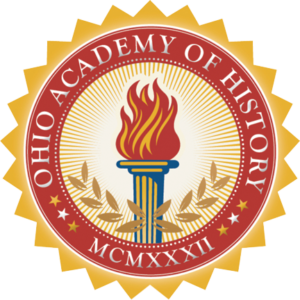CHANGING THE FACE OF HISTORY EDUCATION IN OHIO
Scott C. Martin, PhD
Ohio Academy of History President
During 2013, the Ohio legislature passed HB 59, the biennial budget bill for 2014/2015. In the portion of the bill devoted to education, the legislature made a significant change to the way in which history, as well as other disciplines, would be taught in Ohio secondary schools, colleges, and universities. Section 363.590 of HB 59 revised the Post Secondary Enrollment Options Program (PSEOP), which enabled high school students to take college courses for dual credit, renaming it the College Credit Plus Program (CCP). The new program, which is intended to make higher education more affordable for Ohio families, stipulated that public high schools must partner with colleges and universities to offer up to thirty credits of dual enrollment courses, most of which will be taught by high school teachers certified to offer courses for college credit in the schools. Tuition and book costs will be paid for by school districts through a formal arrangement with partner institutions of higher education. The CCP courses are to have the same format requirements, expectations, and materials as those taught on college campuses. To be certified to teach CCP courses, teachers would need either a Master’s degree in the discipline to be taught, or a Master’s degree in any field with at least eighteen hours of graduate credit in the relevant subject area.
Though a boon to cash-strapped parents – CCP provides for up to a year’s worth of college credit at no cost – the program has raised some concerns on college campuses. An increasing number of first –year college students, concerned observers point out, will have taken much of their introductory course work while still in high school. In the case of history, many students will take one half of either the US or world history surveys before entering college. The impact of this change, for good or ill, remains unclear, as the program is only now being implemented in Ohio schools, but questions remain. Will CCP courses impart basic skills necessary for historical analysis, and prepare high school students adequately for upper-division course work in history? What effect will CCP have on demand for undergraduate history courses, and thus on staffing levels in college and university history departments? Over time, will continued administrative rigor and adequate funding ensure that the dual enrollment courses offered in high schools are in fact roughly equivalent to their counterparts on college campuses?
It is still too early to answer any of these questions definitively, but the Ohio Academy of History takes seriously both the legislative intent of the CCP program and the concerns raised by historians about its execution and impact. This major change in how history will be taught to Ohio high school students demands attention and analysis by teachers, professors, and school and university administrations. The Ohio Academy will continue to monitor the evolution and impact of CCP, and solicits input from historians at the high school and college levels. We will schedule at least one panel or roundtable discussion related to CCP at our next annual meeting, scheduled for 31 March to 1 April 2017 at the Ohio State University in Columbus. As this year’s OAH president, I urge Academy members to use this opportunity to reach out to our colleagues in Ohio’s secondary schools, and encourage them to join the OAH and participate in our advocacy for excellence in history education in Ohio.
